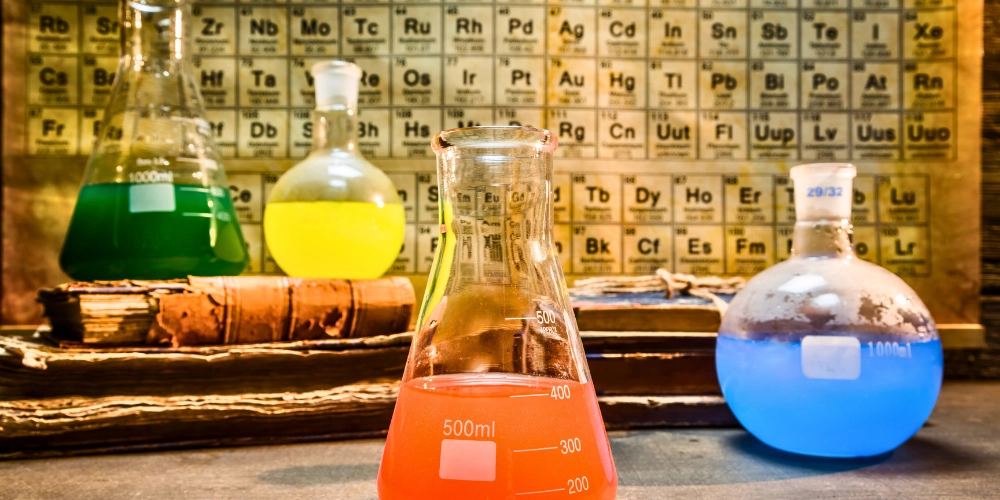
A Comprehensive Guide to VOCs in Drinking Water: What You Need to Know
- Published:
- Updated: April 5, 2024
Summary
Volatile Organic Compounds, commonly referred to as VOCs, are a group of chemicals that have high vapor pressure and low water solubility. Many VOCs are human-made chemicals that are used and produced in the manufacturing of paints, pharmaceuticals, and refrigerants. Some common examples of VOCs that might be found in drinking water include benzene, dichlorobenzene, and trichloroethylene.
These chemicals are called ‘volatile’ because they evaporate at room temperature. Being organic compounds, they contain carbon atoms, which are associated with living organisms and have the potential to cause harmful effects when ingested or inhaled.
Sources of VOCs in Drinking Water
Volatile organic compounds (VOCs) can enter drinking water through various sources, including industrial waste, agricultural runoff, and household products. These sources contribute to the contamination of water supplies with potentially harmful chemicals. Let’s discuss each of these sources in more detail:
- Industrial waste: Industries involved in manufacturing, chemical production, and petroleum refining can release VOCs into the environment, which can eventually find their way into water sources. Improper disposal of industrial waste, leaks, spills, or inadequate wastewater treatment systems can all contribute to VOC contamination in water. Some common industrial VOCs include benzene, toluene, trichloroethylene, and perchloroethylene.
- Agricultural runoff: Pesticides, herbicides, and fertilizers used in agriculture can contain VOCs. When these chemicals are applied to crops or fields, they can infiltrate the soil and potentially leach into groundwater or surface water through runoff. VOCs from agricultural sources commonly include atrazine, glyphosate, and chloroform. Additionally, animal farming operations may produce VOCs such as ammonia, which can contaminate water supplies if not properly managed.
- Household products: Many household items contain VOCs, which can slowly release into the surrounding air and water. Cleaning products, paints, solvents, adhesives, and personal care products such as perfumes and cosmetics often contain VOCs. When these products are used or disposed of improperly, VOCs can enter the wastewater system and find their way into drinking water sources.
Other potential sources of VOCs in drinking water can include gasoline spills or leaks from underground storage tanks, emissions from motor vehicles, and natural sources such as underground geologic formations.
It’s important to note that the presence of VOCs in drinking water can vary depending on the geographical location, industrial activities, agricultural practices, and individual lifestyle choices. Regular monitoring and proper treatment methods are essential to ensure the safety of drinking water supplies. Public water systems typically employ various treatment techniques, including activated carbon filtration, aeration, and disinfection, to remove or reduce the levels of VOCs and maintain safe drinking water standards.
What are the Health Effects of VOC Exposure?

Exposure to elevated levels of VOCs, particularly over a prolonged period, can lead to a range of health effects. In the short term, consuming water with high VOC levels can cause symptoms like nausea, vomiting, and stomach upset. Some people may also experience irritation in the eyes and respiratory tract.
Long-term exposure, however, carries more severe risks. Some VOCs are known carcinogens, meaning they have been linked to an increased risk of cancer. Prolonged VOC exposure has also been associated with damage to the liver, kidneys, and central nervous system. It’s important to note that the exact health effects can vary depending on the specific VOC and the level and duration of exposure.
How to Detect VOCs in Your Drinking Water
Detecting VOCs in your drinking water can be a challenging task due to their volatile nature. They often can’t be detected by taste or smell, which means specialized testing is required. You can use at-home testing kits available on the market. These kits generally involve taking a water sample and sending it to a water testing laboratory for analysis.
However, for a more accurate assessment, you may consider hiring a professional water quality testing service. These services have the resources and expertise to accurately measure VOC levels in your water. Regular testing can help ensure that your water stays safe and meets health standards.

Regulations and Standards for VOCs in Drinking Water
Regulations and safety standards are in place to control the amount of VOCs in drinking water. In the United States, the Environmental Protection Agency (EPA) sets standards for drinking water quality, including the maximum allowable levels for various VOCs.
These regulations are essential in protecting public health. However, it’s also crucial for consumers to stay informed about these standards. Knowing the maximum allowable levels for different VOCs can help you understand your water quality reports and assess the safety of your water supply.
What are the treatment methods for removing volatile organic compounds (VOCs) from drinking water?
Fortunately, there are several water treatment methods available for reducing or eliminating VOCs from drinking water. One common method is the use of activated carbon filters. These filters work by trapping VOC molecules in a bed of activated carbon, effectively removing them from the water.
Another method is aeration, which involves exposing the water to air so that VOCs can evaporate. This method can be highly effective for certain VOCs but may not work as well for others. Therefore, the best treatment method will depend on the specific VOCs present in your water.
Prevention: Reducing the Risk of VOC Contamination
When it comes to VOCs in drinking water, prevention and risk reduction are key. To prevent VOC contamination in your home, start by disposing of household chemicals properly. Many local waste facilities have special disposal procedures for hazardous substances, including VOC-containing products.
Also, consider advocating for cleaner industrial and agricultural practices in your community. Encouraging local businesses and farms to minimize their VOC emissions and use safer alternatives can go a long way in protecting your local water supplies.
What is the role of water suppliers in protecting water quality?
Local water suppliers play a crucial role in protecting the quality of drinking water. They are responsible for monitoring, testing, and treating drinking water to ensure it meets safety standards, including those for VOCs. Water suppliers typically perform regular tests to monitor for a range of contaminants, and they use various treatment methods to reduce or eliminate these contaminants as needed.
However, it’s essential to remember that while water suppliers play a key role, consumers also have a part in maintaining the quality of their drinking water. Stay informed about your local water quality, regularly test your own water if possible, and take steps to reduce potential sources of VOC contamination.
Share this on social media:
















